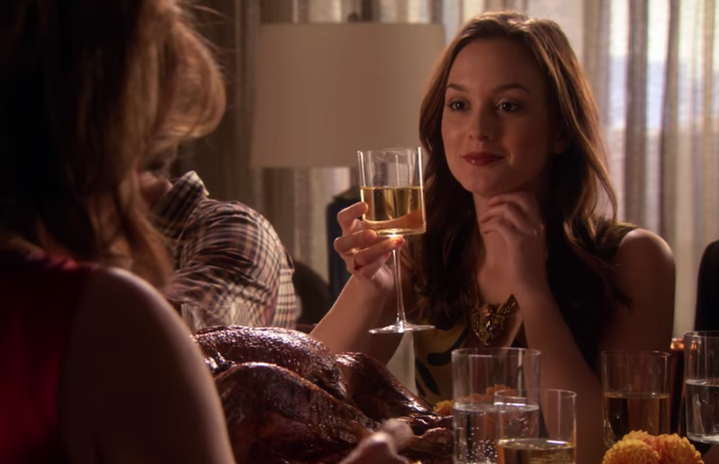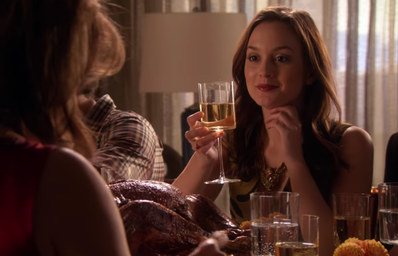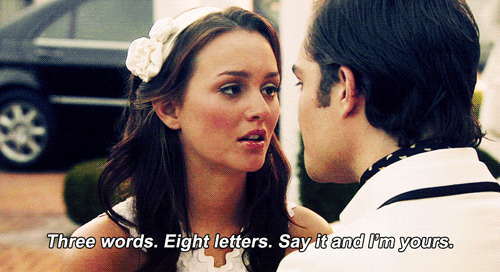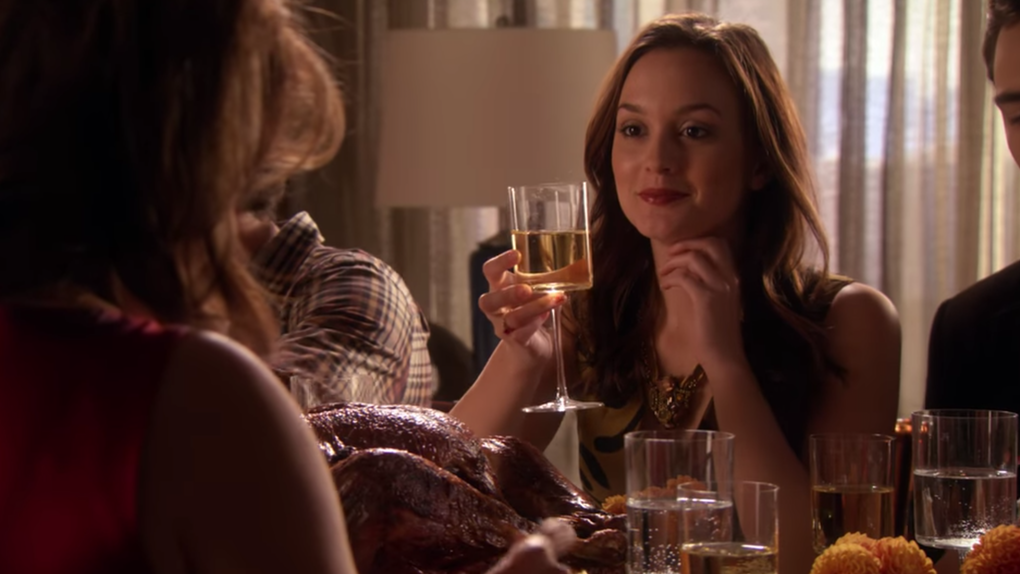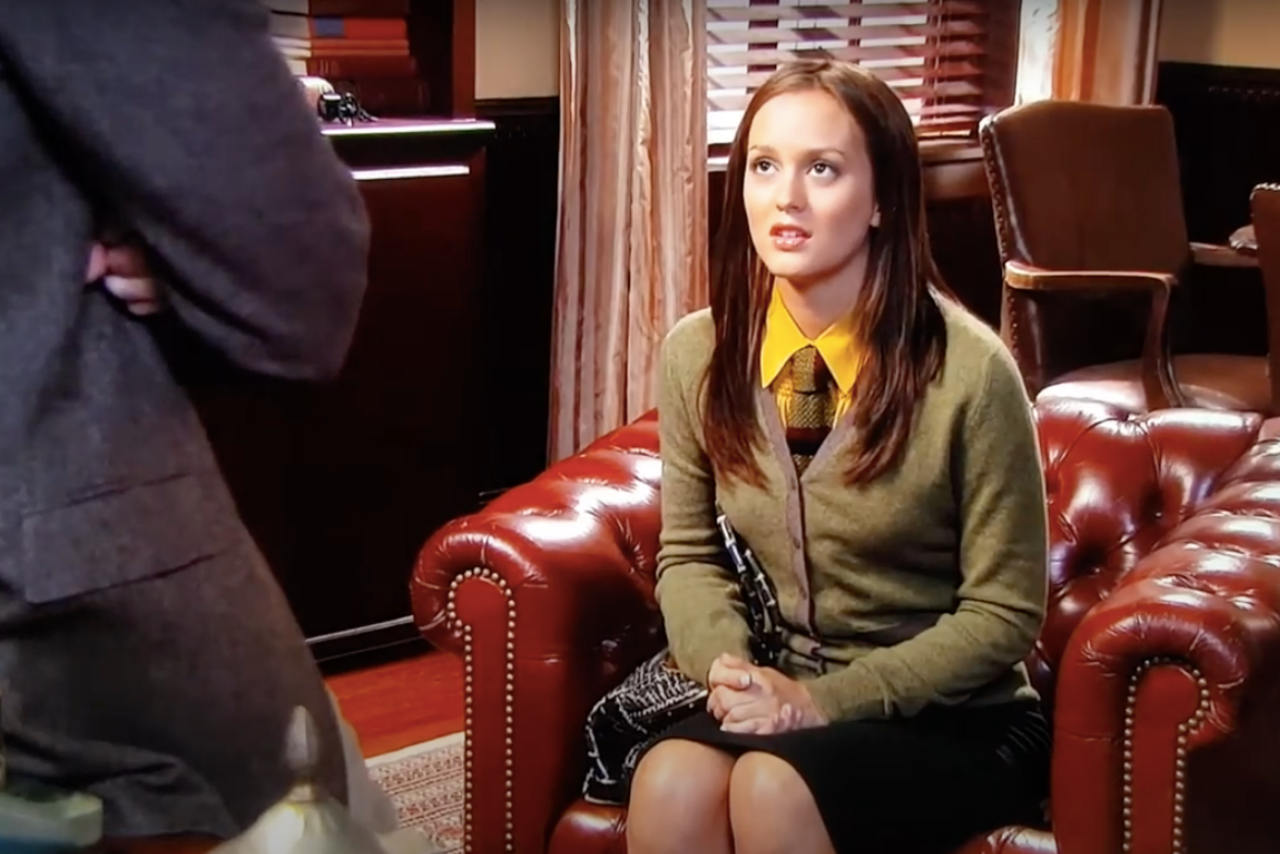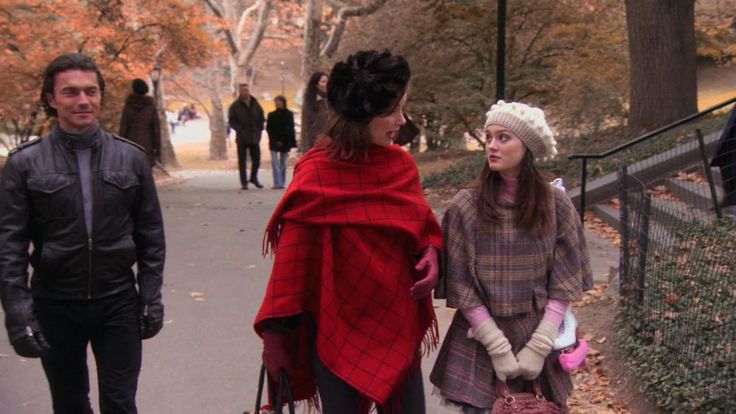Airing for six seasons and 121 episodes on the CW from 2007 to 2012, Gossip Girl was a full-fledged cultural phenomenon at the turn of the decade, irrevocably having a monstrous impact on both industries. The alluring teen drama skyrocketed Blake Lively, Leighton Meester, and the rest of the cast into household names and started fashion and TV trends IRL that continue to be sought-after even today. Also, New York Magazine calls it both “The Greatest Teen Drama of All Time” and “The Most Important Show of Our Time,” so there’s that.
Gossip Girl is my favorite show of all time. While I love many TV shows, no show has quite ever measured up to Gossip Girl in my eyes ever since I first streamed it. The closest show to ever come close (and I mean, very close) is Euphoria, and for very similar reasons. Gossip Girl is basically my entire personality in a show. My love for fashion and New York is at the forefront. Its genre is coming-of-age meets soap operas which are two of my all-time favorite genres. It has a female-driven plot and a script filled with pop culture references, both current and historic. The show overall is an old soul, much like me, often referencing everything from old Hollywood to 90s teen films through dialogue, fashion and storylines. It also uses my favorite type of comedy; satire. It has a female-driven plot and a script filled with pop culture references, both current and historic. The show overall is an old soul, much like me, often referencing everything from old Hollywood to 90s teen films through dialogue, fashion and storylines. Basically, the show is pure brilliance. However mostly, I adored the show’s priority on beautifully flawed and complex female characters, especially Blair Waldorf. I had never identified with a character more than when I first watched Leighton Meester’s severely underrated performance. She gave a common stereotype of the time, the “mean girl/Queen Bee,” so much humor, vulnerability and humanity. The specificity and depth she brought to a character that could have easily become just another mean high school girl became what every means girl character before and since has been measured up to, and very, very few have achieved such iconism. It may not be a stretch to say Leighton Meester’s performance as Blair Waldorf, my favorite television character of all time, is why I wanted to be an actor in the first place.
The formula of this show; filming it in New York, the focus on teens, the enviable fashion, the bombastic use of music, the use of technology and the focus on the wealthy community; is pure brilliance. It created a cinematic universe that is alluring, seductive, addictive and problematic, just like the characters and society they were portraying. The show expertly mixed coming-of-age themes of identity, growing up and relationships with glittery themes of rebellion, wealth and old Hollywood-like glamour. But, if you have never seen an episode of this FABULOUS show, here’s the gist: A group of privileged prep school teens who live mostly on the Upper East Side is tormented by an anonymous online presence that calls itself Gossip Girl, who chronicles all their scandalous lives. At the center of it all are best friends Blair Waldorf and Serena Van Der Woodsen. Gossip Girl led a reign of terror throughout NYC, making everyone, but especially the rich and famous, fear the exposure of their dirty deeds and secrets on the website, but that didn’t stop them from behaving badly either. It was basically the live-action version of My Scene dolls, centering around cool teenage girls who go clubbing and dress fabulously and expensively.
Gossip Girl was a very popular book series by Cecily von Ziegesar and its creation into the now uber-successful TV show was a result of a combination of many TV trends at the time of both NYC, like Sex and The City, & reality TV showing the lives of the rich and famous (which was an actual reality show in the 80s, one of the entertainment-based shows and reality shows ever), like The Hills, The Real Housewives franchise and Keeping Up With The Kardashians (KUWTK even featured one of Gossip Girl‘s most iconic locations, the Empire Hotel, in the season six episode where Kim took Kendall to her first modeling trip to New York for Sherri Hill). However, Gossip Girl stuck out because of an added third and fourth element: teens & technology.
Up until the 2000s, content for young adults was more wholesome, comedic, innocent, and sometimes childish. Examples are Full House, Fresh Prince of Bel-Air, Boy Meets World, and Sister, Sister, until the 90s and 2000s when shows began showing teens in a dramatic context rather than comedic with shows like Beverly Hills, 90210, Friday Night Lights, One Tree Hill, and The OC. These shows showcased teens dealing with real-life issues not just for one episode arcs, but as full, sometimes season-long storylines. However, they were still pretty wholesome, often set up around a small town, surrounding a sport, or focused on a specific one or two families. Before Gossip Girl, they had teen dramas that had a foundation and facade that was family-friendly and wholesome like Gilmore Girls or One Tree Hill, that with one rewrite could easily become a single-camera comedy. However, Gossip Girl turned the teen drama into something dark, mysterious, rebellious and scandalous. So, if you look at the timeline of the teen genre on TV, there is basically BGG, or Before Gossip Girl, and AGG, or After Gossip Girl. The world was alluring snd seductive, but also toxic and problematic, and it had a relatable and universal coming-of-age element that made the audience empathize with these larger-than-life characters, despite their mistakes and upbringing. In essence, Gossip Girl walked so teen dramas of today like Euphoria could run.
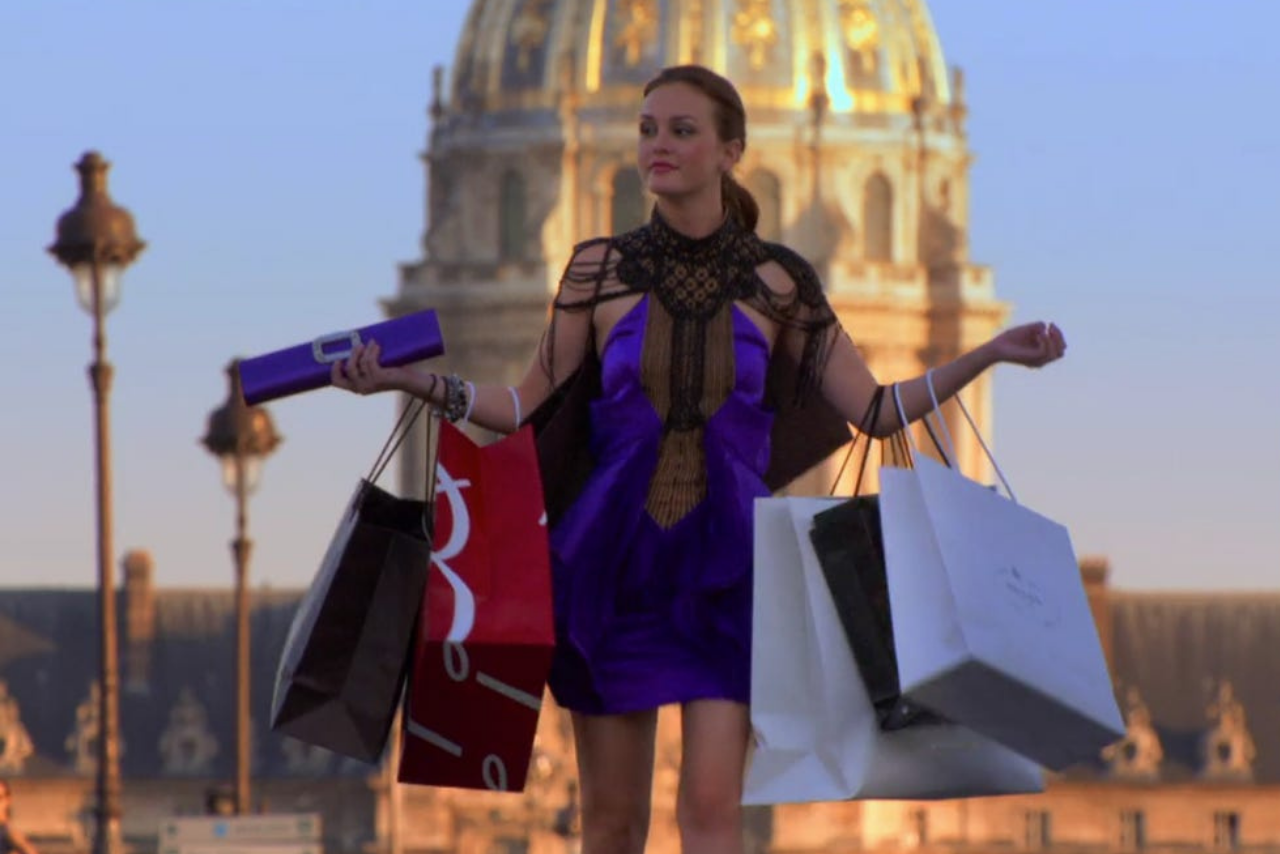
While cell phones and the internet were in many TV shows that did and don’t center around teens, Gossip Girl was one of the first to use it as a storytelling device. By using Kristen Bell’s iconic voiceover, it gave the show a more sinister feeling that there really were eyes everywhere. Basically, it was Deuxmoi for Manhattan teens. It was revolutionary, especially because in 2007 Perez Hilton and TMZ didn’t even exist yet, especially not Instagram and Twitter. Without Gossip Girl‘s usage of technology, movies like The Duff and Kissing Booth and shows like Genera+ion and Pretty Little Liars wouldn’t have existed, or at least would be far less successful.
Gossip Girl, besides the Degrassi franchise and Beverly Hills, 90210, is the original teen soaps, was the first time since the 1980s (Dynasty, Dallas, Knotts Landing, etc.) that primetime TV got the soap opera treatment. I grew up watching General Hospital (which currently stars Penelope herself, Amanda Setton, as a member of the iconic Quartermaine family), so to me Bart Bass coming back to life, Ivy Dickens pretending to be Charlie Rhodes and Serena and Dan sharing a sibling were all no big deal because that type of thing is normal in soap operas. I think all of that has happened to iconic mobster Sonny Corinthos on General Hospital. So a teen drama, which has elements of soapy melodrama, all with the glitzy and glamorous backdrop of New York high society: yes, please! Essentially, Gossip Girl brought the 80s back between the allure of the wealthy and privileged like in The Lifestyles Of The Rich and Famous and the soapy dramatics of Dynasty, added in the 90s/2000s trend of teen and technology and created a masterpiece (this 80s comeback even more time when you remember how 80s trends like neon and acid wash were coming back in the early 2010s AKA during the later season of Gossip Girl. Even Blair Waldorf dawned the trend of neon, showing viewers how to style neon in the most classic, sophisticated way possible).
Gossip Girl is also a white privilege satire in the same vein as Succession or White Lotus. While there are relatable aspects of self-discovery, identity, taking the SATs, transitioning from high school to college and peer pressure, it also (and mostly) embraced its out-of-touch ridiculousness. That’s part of why the fantasy was so thrilling and addictive to watch. The humor came from how ridiculous Blair Waldorf’s classism was and how unapologetically dramatic Chuck was. It was a satire of the rich and teens, who can both be entitled and self-centered. So, when you combine those elements into a show and use satire as the type of comedic relief the show employs, it creates a work of television that’s nothing short of brilliant.
Before Gossip Girl, the world has seen NYC from adults’ eyes on TV and in movies, but never from a teen’s perspective. There were also very few shows that romanticized NYC as the movies did. Sex and The City wasn’t on the air anymore. Most shows featured dirty NYC with dead bodies and crime. It wasn’t really until Sex and The City that NYC got the rom-com treatment on TV. However, it was still from the adult perspective. There was never a show about young people living in NYC, until the glamorous Gossip Girl.
Using a blog in 2007 was quite ahead of its time with MySpace being one of the biggest websites young people used at the time. With that, plus the NYC scenery, intriguing soap opera storylines, built-in book audience and gorgeous clothes combined with steamy sex sells marketing campaign, it was a guaranteed success.
The steamy marketing campaign with posters using critics’ “bad” reviews was genius and is still dissected today. It featured a steamy snapshot from the show and was labeled with a bad review, but in the context of the poster, it came off very cheeky. An example, during Nate Archibald (Chace Crawford) and Blair’s steamy pool make-out, a quote read “A Nasty Piece of Work,” which made it slightly pornographic for 2007 CW standards. A textbook example of sex sells. Also, evidence that Gossip Girl was the perfect show to encapsulate teen rebellion. However, in the classic ways teens behave, telling them not to do something only makes them want to do it more, and that’s what Gossip Girl’s marketing team encapsulated in this marketing campaign.
Most of the quotes were from middle-aged critics or parental advisory boards criticizing the show’s depiction of sex and partying, which by today’s “Euphoric” standards are petty tame. In The Cut’s Women of Euphoria article, they even referenced how the Boston Herald called Gossip Girl “Every parent’s nightmare,” saying that Euphoria was today’s equivalent: TV’s current teen panic show. Therefore, without Gossip Girl, there would be no Euphoria.
Besides Sex and the City, it was rare to see young women enjoying sex. Gossip Girl showed that in quite an unapologetic way, finding creative ways to get around the CW’s restrictions with camera angles and innuendos. From 2007-2012, Gossip Girl was undeniably sex-positive and sexually feminist. Without these portrayals, there would be no Sex Education or Euphoria. Gossip Girl was quite ahead its time in its portrayal of being a teenager and female sexuality. It showed young women discovering their sexuality and sexual desires, which was quite revolutionary for the time. It also showed teens romanticizing their lives and prioritizing self-care (Looking at you, Blair). Being celebrities in their inner circles before influencers and going viral was a thing.
Due to the built-in audience from the books, it already had buzz before it came out and was considered one of the most anticipated shows for the fall 2007 TV season and by the end of the first season the New York Magazine article came out and named it “The Greatest Teen Drama of All Time” and had a cover of the same magazine that said, “Best Show Ever.” But although the show was deemed a guaranteed success with its built-in audience, the show wasn’t originally doing well on the CW network. It was the CW’s first original show with all its other shows first premiering on what was the WB network, including One Tree Hill. Then the writer’s strike happened and all production stopped (sound familiar?). Gossip Girl was all the CW had and would air Gossip Girl in reruns. This got people hooked and the addictive quality of the show sunk in.
Critics thought the show was silly at first, and some close-minded pens still do, but when people from the world of the Upper East Side started to validate it, it caused people to take a second look. Even people who weren’t in the target demographic of 13-17-year-olds found themselves obsessed with the show.
It was a cultural phenomenon in every sense of the word, and not just in America, but in the world. Remakes were made internationally, and no I’m not talking about Elite. There was Gossip Girl Acapulco. There were also remakes in Thailand and Turkey. However, they were pretty much just copycats of the first season. Why watch the show in your own language when you can just pirate the original? Due to a lack of originality, these remakes never went past their first season.
It was such a success that the CW even considered giving Gossip Girl a spinoff. Remember the Valley Girls episode where they showed young Lily Rhodes in 80s LA? That was a backdoor pilot to the ultimately failed spinoff. A similar concept was used after Gossip Girl ended with Schwartz, Savage and Eric Daman teaming up for the Sex and the City prequel The Carries Diaries. The CW didn’t actually have a successful spinoff until The Originals from The Vampire Diaries.
Gossip Girl remained popular through the turn of the decade, stilling reigning supreme despite the genre’s gradual overcrowding with shows like Teen Wolf, The Vampire Diaries, Glee, Pretty Little Liars, One Tree Hill, Skins and The Secret Life of the American Teenager. It’s still one of the most popular and talked about teen dramas even with new ones like Euphoria, 13 Reasons Why, Outer Banks, Riverdale and Sex Education taking up the mantle. Gossip Girl‘s success and influence on these shows, as many of them are described as “Gossip Girl meets whatever,” shows how profitable, influential and enduring the genre is, with the longevity and success to match. The two-decade zeitgeist is proof, which Gossip Girl no doubt spearheaded.
Gossip Girl also expanded its universe beyond New York City many times. The first is the Hamptons, which is a common summer getaway destination for NYC’s elite. The second was Paris, which is what every fan wanted to see since Paris is Blair’s happy place. And the last getaway was Los Angeles, which gave Gossip Girl the Entourage treatment (which coincidentally Leighton Meester starred in pre-Gossip Girl although she didn’t film in LA during these episodes). This was fairly realistic for the show to do since the rich jet set all the time. How many times did Chuck Bass jet away from his problems? Don’t the Kardashians go on vacation every season? See what I’m getting at? They also filmed actually in all these locations (or, at least the big ones like The Hamptons, Paris and LA, not necessarily every Chuck Bass jet set to Monte Carlo, Dubai or Thailand). And it was for the same reason they filmed the show in New York City, it looked good from almost all angles and added a sense of authenticity that a soundstage or studio just could never replicate.
It was also realistic about the Upper East Side prep school circle, constantly referencing all-girls schools Chapin (alumnae including Jackie Kennedy, Samantha Ronson, Vera Wang, Sigourney Weaver, Lilly Pulitzer and Stockard Channing), Spence (Gweneth Paltrow, Emmy Rossum, Kerry Washington and fictionally Veronica Lodge on Riverdale), Brearley (Alexandra Daddario, Jenny Bicks, Eva Chen, Caroline Kennedy, and her daughters), Nightingale-Bamford (Gossip Girl author Cecily von Ziegesar, Better Midler’s daughter and Olivia Palermo), co-ed schools like Dalton (Claire Danes, Jennifer Grey, Tracy Ellis Ross, Christian Slater, Gossip Girl‘s Wallace Shawn, and unfortunately staffed at one time by Jeffery Epstein), all-boys schools like Chapin and Brearley’s brother school Upper West Side’s Collegiate school (John F. Kennedy, Jack Schlossberg aka JFK’s grandson, Matthew Daddario, Mark Ronson, Gossip Girl‘s Wallace Shawn, and Nate Archiblad’ fictional relative IRL Cornelius Vanderbilt II) and a bit of stretch, but the Bronx’s Horace Mann school (Roy Chon, James Murdoch, and Nelson Peltz aka Nicola Peltz aka Brooklyn Beckham’s fiancee’s dad) right by the Bronx neighborhood Riverdale. I know, interesting right? remember when Blair Waldorf said Riverdale doesn’t count as New York in season 3? Well, it was predating the TV show. This is what she meant.
Anyway, this offered a sense of realism to the show. It was a realistic depiction of what really happened when you go to school on the Upper East Side. You ride limos, go to masked balls and go to Ivy League colleges as Kansas City kids go to KU and K-State. Gossip Girl‘s all-girls Constance Billard was even based on von Zeigasar’s Nightingale-Bamford school and their uniforms on Spence’s plaid and blue skirts. All-boys St. Jude’s was based on Collegiate. Gossip Girl constantly mentioning these other real-life schools made the world feel more real, both for those watching who actually lived in that world and outside spectators who only know those schools from their prestigious alumni. Although, Gossip Girl didn’t film at any of these schools. They used the Museum of The City of New York on Fifth Avenue facing Central Park as the iconic exterior.
While the show was mostly ahead of its time in showing female sexuality, cancel culture, and casual sex. It was also very criticized for its recreational drug use, online harassment, teen partying and drinking, Chuck Bass’ (Ed Westwick) character arc, and an all-white cis-gendered straight main cast. However, much like Succession and White Lotus, Gossip Girl was a satire of the rich in the glittery disguise of being a teen drama and fashion-forward. Their materialism, entitlement and flat-out absurdity are presented as very matter-of-fact, not comedic, or even, at times, aspirational. It shows that having it all doesn’t necessarily mean you have it all. Storylines mostly centered around themes of family, relationships, friendship and school, ideas that no matter what economic status you have, you can relate to. Blair and Nate (Chace Crawford) had huge amounts of pressure from their parents. Serena never had a stable home life. Chuck’s parents both died. Eric Van Der Woodsen (Connor Paolo) was outed as gay. Jenny Humphrey (Taylor Momsen) struggled to try to get into the popular crowd at school. Dan Humphrey’s (Penn Badgley) parents got divorced. Blair struggled with an eating disorder because she can never get her mother’s approval. Every character was flawed, good-intentioned, badly behaved, decisively complex, striving, and equally hateable and loveable, some more than others (and our opinion certainly changed over the course of the series with every character). These are all real, relatable, and timeless things kids go through IRL, and while it did have a sparkly facade, it pulled you in not just by its soapiness and sparkle, but also by its refreshing realism. Just because these kids have bottomless bank accounts and designer school uniforms doesn’t mean they don’t struggle, and while sometimes those are superficial, they are often rooted in something everyone can connect with.
Gossip Girl was the first show I watched that didn’t have a “perfect” character, or a character “supposed to be perfect.” Each character was relatable and deliciously flawed. Serena may have been Dan Humphrey aka Gossip Girl‘s muse, as well as many others like Aaron Rose, Kiki Montparnasse and remember when Dorota (who definitely should have been Gossip Girl) once said “I heard Marc Jacobs named a purse after her” (Jane Birkin, much?), was also very intellectually insecure compared to the smart and cultured Blair, which causes her to not be taken seriously. This causes her to act out through partying and revenge sex, further continuing the cycle. While Blair is more insecure in easier to relate ways because he is in the shadow of the wild and beautiful Serena, who because of her fun personality and societal beauty good looks, gets opportunities that Blair would kill for without Serena realizing it, from handbags and lingerie named after her to closing fashion shows just for fun. This causes Blair to have a perfectionist nature which causes her to develop an eating disorder because she doesn’t look like Serena. She bullies her classmates to make her feel powerful and beautiful. She knows they admire her like she admires Serena, and so if Serena makes her feel bad about herself to some degree, meaning Serena is only slightly aware of her effect on Blair, or as much as Blair will let her, it makes Blair question is that how she is supposed to treat her minions? After all, she’s a teenager discovering who she is and these formative years shape these girls’ personalities forever and who they will become. Serena continues to be handed things from jobs and board memberships, while Blair works hard for everything she gets from an internship at W magazine where she had to fax her resume to all 300+ machines in the building (while Dan simply had Lily give him a reference, ugh) to doing everything she can to get into college. However, these accomplishments and goals are often taken away or too good to be true because Blair’s mean girl tendencies she started to develop in grade school often catch up with her. However, unlike Serena who always said she wanted to move away from her past and try to change, but even really did, Blair figured out how to make her flaws, her insecurity and mean girl tendencies, into what makes her successful. This is shown in, what frankly saved season 6, which was Blair’s journey of officially taking over Waldorf Designs, her mother’s fashion brand.
It’s so underestimating smart. At the beginning of the series, Serena is almost an antiheroine, way ahead of its time being it was before its TV antiheroine hey-day with Rue in Euphoria and Villanelle in Killing Eve, which makes the more antagonist figure of Blair Waldorf, at least in the first few episodes of the series when Blair is seen as the villain even though Serena slept with her boyfriend before skipping town. Blair is completely justifiable in her hatred for our supposed heroine. Then in later seasons, it switches. Blair becomes the show’s ultimate antiheroine with her good-intentioned scheming and brutally honest bitchiness, both qualities of which she owns unapologetically, while Serena becomes the easy-breezy antagonist, subverting stereotypes and introducing a new way to portray women on screen (this aspect of the show, frankly deserves SO much more credit). The use of antiheroines had never been done before on mainstream TV, especially in a teen show. There were iconic TV antiheroes like Tony Soprano in The Sopranos, which went off the air in 2007, and Don Draper in Mad Men, which premiered in 2007. It was a very sophisticated choice, just as sophisticated as the show’s best character Blair Waldorf, which isn’t an opinion, but a fact.
In Jessica Szohr’s Gossip Girl-focused interview podcast “XOXO,” she interviews Gossip Girl masterminds Josh Schwartz and Stephanie Savage. They discuss how one of the things they are most proud of in Gossip Girl is their revolutionary portrayal of the complexities of female friendships. Blair and Chuck may have been Gossip Girl’s romantic powerhouse, but the real love story of Gossip Girl was Blair and Serena’s complicated relationship. This was quite revolutionary because at the time female friendships on TV were either best friends or enemies, never really both. Sure there were betrayals in female friendships like with Peyton and Brooke on One Tree Hill, but most of the time they were either pure rivals like in High School Musical with Sharpay and Gabrielle or best friends like Marissa and Summer in The OC. Serena and Blair were the birth of the frenemy. Even when they are at odds, there is still this strong sense of eternal sisterly love and camaraderie. There were often moments in the show when Blair and Serena would come to a breaking point, but it was never truly a breaking point. There would often be scenes of them saying no matter what happens “she knows” that they’d be there for each other. That they will always love each other. In Gossip Girl, female friendships received the same complexity as romantic relationships, which has never really been seen before, especially on TV and in the teen genre. Without this, female-driven shows like Pretty Little Liars wouldn’t have existed.
Gossip Girl was also a period piece of New York. For example, before LAVO was the hottest club and restaurant today, back then it was the hot club Visconti (they even share the same building). Iconic New York establishment The Box, a burlesque club, was used as Chuck’s Club Victrola. It is also frequently filmed at popular New York hotels like The Empire and The Palace. It’s a time capsule of New York, so to speak.
By showing the coolest places and people in NYC between 2007 and 2012 and filming at a real location in NYC, Gossip Girl became a bragging right, as if “if you were on Gossip Girl, then you were cool.” The creators wanted the show to function as a magazine. What’s a fashion trend that’s in? What’s the hottest new designer? What’s the coolest new restaurant, bar or store? You could go online and figure that out or you could watch Gossip Girl. Tourists started to visit New York because of Gossip Girl. There are Gossip Girl tours and fans are often seen visiting its most iconic locations from the Met steps to the Empire Hotel.
The show had an endless array of cameos to add a level of authenticity to the show’s public eye and New York setting. From fashion industry figures like Diane von Furstenburg. Michale Kors, Isaac Mizrahi, Tory Burch, and Rachel Zoe, who then had to be costumed for the show funnily enough, to other famous folks like Tinsley Mortimer from The Real Housewives of New York (multiple times) to artists like Richard Philips to Mayor Michael Bloomberg to even (unfortunately) Ivanka Trump and Jared Kushner. Everyone wanted Gossip Girl‘s stamp of approval. Everyone wanted exposure on Gossip Girl IRL. Bloomberg was such a big fan that he even named January 26th Gossip Girl Day in New York City.
Fashion like Sex and The City was so impactful that it ended up setting real-life fashion trends. Henri Bendel had a Gossip Girl-themed window display. New York designer Anna Sui made a Gossip Girl-inspired line for Target that sold out in 24 hours. During season three, when Chuck traded Blair for the Empire Hotel (long story) designer Matthew Williamson helped promote the iconic and heartbreaking episode with window displays featuring Blair’s iconic Matthew Williamson dress from the episode and had decays that said “What did Chuck do?”. And it still influences the fashion industry today. Alice + Olivia had a Gossip Girl-inspired line with a collaboration from Eric Daman, the show’s costume designer, for Stacey Bendet’s Fall 2021 collection. Prep school-inspired style was seen all over the runways in the season following the release of the show. Designer Nannette Lepore said that the show was instrumental in advertising for her company doing what editorial would have done ten years prior. Headbands were Blair’s signature accessory and Jennifer Behr designed most of them. She believes that she wouldn’t be as successful as she is today with Gossip Girl showing people how to have fun with headbands. Blair’s engagement rings as really Harry Winston and EVERY TIME it was used on the show, they came with two security guards and a german shepherd. Style icon Blake Lively was equally as obsessed with the fashion on the show that she started to keep a file of clothes she wanted to ask for at the end of the show but had to stop because it was getting too big.
Gossip Girl ushered in many fashion-focused shows with teen demographics like True Jackson VP and Jane By Design, although none had Blair’s dictator-like eye or Serena’s enviable ease. Although they were far less successful than Gossip Girl. The only fashionable show even closely measured up to Gossip Girl at the time was Freeform’s Pretty Little Liars. They too had distinctive costumes for their main characters and used costumes as storytelling devices, with the characters of Hanna Marin (Ashley Benson) and Spencer Hastings (Troian Bellisario) being most similar to Gossip Girl’s aesthetic. They also spawned a Pretty Little Liars-inspired line for Aeropostale. Although Pretty Little Liars thrives in it being more affordable and at least a tad more realistic than Gossip Girl, they both employed an excessive and aspiring amount of heels.
What made Gossip Girl stand-alone was how not only was it eye-catching but it was also a storytelling device. Each character has their own specific and distinctive fashion identity that acted as the actors’ armor. After all, wearing something that only that character could pull (literally, there were a lot of daring outfits on Gossip Girl), it changes your physicality from your posture to the way you walk, after all, you walk differently ins sneakers than in 5-inch stilettos. Clothing showed Blair Waldorf’s duality between her dark, scheming, and sexual side and her light, stylish, and ambitious side and showcased Serena’s fantastical image projected on her by golden tones and her intellectual insecurity. Each character was also very distinctive. Their style showed their personality differences. Blair was more meticulous, calculated, powerful, academic, and classic and this was shown through costume through her headbands, pussy bows, large cape coats, matching sets and wearing heels to school. While Serena was more risque, spontaneous, experimental, and free showed through clothing by wearing jeans, low-cut tops, earthy tones, short dresses, cutouts, boots, and often undone hair. Not to mention Jenny Humphrey’s style evolution from Blair-esque thrifty prep to memeably edgy, but in reality regretful of her surroundings and honestly quite ahead of its time trend-wise.
The show was glamorous in the same way Old Hollywood was where people really dressed up, but most of the time, it wasn’t exactly realistic when it came to what the characters wore, after all, you have to be Superwoman to walk 20 blocks in 6-inch LouBoutons every day. However, it was realistic for the lifestyle they live, being that those women and girls do wear these brands and shop straight off the runway. The costume department had access to some of the best fashion in the world from knowledge of the fashion world to styling to designers and garments themselves. It’s aspirational and romanticized, which made viewers fall in love with its aesthetic. Also, the characters were trendsetters, so trends were vital to their character, but they were also different in how they did that just like how different people like different trends at any given time and time period have many different aesthetics. For example how there were the Paris Hilton girls, the emo kids, and the Alex Russo wannabes in the early 2000s.
While shows like Sex and the City, That 70s Show, The OC, and Beverly Hills, 90210 had great costumes, TV still wasn’t paying that much attention to their costume design as opposed to movies like The Devil Wears Prada and Clueless. It was actually fairly common for actors in TV shows to wear their own clothes like costumes to cut costs like in The Brady Bunch or wear clothes from average stores like Walmart or Target (no offense to people who show at those stores because TBH I love Target). Powerful costume design in TV is actually a fairly new concept. The TV industry didn’t take time to develop its relationship with the fashion industry pre-Gossip Girl, so in the very beginning, Daman found it very hard to get a designer wardrobe because designers didn’t see TV as a powerful marketing tool as editorial fashion magazines or red carpet appearance. Hence, why Blair Waldorf wore a Zara matching set in season 1. There was such a stigma around the look and cheapness of TV (imagine if Succession, Euphoria and Big Little Lies came out a decade earlier). However because of the success of the show and the skyrocketing fame of its stars, the fashion industry changed their minds and began begging to have their products appear on the show, even world-renowned houses like Dior and Valentino, but when Chanel got on board, much like everything Chanel does in fashion history, so did everyone else. The show began showing luxury brands which gave the show a more editorial feel and more realism because if the characters were wearing LouBoutons and carrying Chanel and Dior bags, it was easier to buy that they were part of Manhattan’s 1%.
Even though maximalism was on-trend at the beginning of the series and minimalism rose in popularity towards the show’s end, the maximalist style became so synonymous with the show that even their minimalist style was somewhat maximalist. They may have been wearing fewer accessories, but each was bright, sparkly, and eye-catching. While the fashion was definitely pretty and eye-catching, but not necessarily wearable they did spawn IRL fashion trends from preppy style to headbands to capes to fun tights.
Another influential element of Gossip Girl was the music. The music in Gossip Girl started the CW’s musical trademark of using a mixture of pop songs you’d hear on the radio, promoting indie bands, and deep cuts that turn into classics. CW shows like The Vampire Diaries, Riverdale, Legacies, and Nancy Drew still do this today. However, Gossip Girl’s music taste stands alone and stands out. Gossip Girl creators thought of Gossip Girl as a magazine. Viewers could watch the show to find out the latest fashion trends or new music to listen to. In that sense, if it was Gossip Girl, then it was cool. Even Euphoria music supervisor Jen Malone credits Gossip Girl with making music supervisors respectable to viewers and Hollywood alike, being that only recently did become a category in the Creative Arts Emmys. Gossip Girl sort of created the “Spotify effect” of younger people discovering underground artists and older artists and adding them to their playlists. Before Glee, introduced teens to iconic classic rock songs, providing a soundtrack that appealed to multiple generations. Gossip Girl used music like “Dreams” by The Cranberries, “I’m Coming Home, Baby Now” by Mel Torme, and “Like A Virgin” by Madonna, Sonic Youth’s living performance of “Star Power” (which is Savage’s personal favorite band), all the 80s hits in the Valley Girls episode from “Destination Unknown” by Missing Persons to “I’ll Melt With You” by Modern English and pop music instrumentals before Gossip Girl’s regency sister Bridgerton with Vitamin String Quartets’ covers of INXS’ “Never Tear Us Apart” (before the iconic Euphoria season 2 moment might I add) and Pat Benatar’s “We Belong,” which credits Gossip Girl as a huge inspiration for the show (cast members often described Bridgerton as Jane Austen meets Gossip Girl during season 1 press appearances) and it’s Lady Whistledown anonymous narrator and gossip writer (just in 1813). Gossip Girl was also known for dedicating full episodes to an up-and-coming artist’s new album, for example, The Virgins, a local New York indie band, had an episode dedicated to their self-titled album in season one, and Frank Ocean’s Channel Orange album was used to soundtrack season six’s debutante episode. Their music supervisor Alexandra Patasavas, who also did the music on The OC, Grey’s Anatomy, Mad Men, and Beverly Hills, 90210, was also responsible for the trend of using TV appearances to promote music, also using this tactic on Josh Schwartz’s The OC. Remember when The Killers’ especially sang Mr. Brightside at the bait shack on The OC? well Patasavas and Schwartz upped it a notch with performances by Lady Gaga early in her career (pre-superstar), St. Vincent, The Airborne Toxic Event and (Blake Lively’s friend) Florence and the Machine on Gossip Girl. No Doubt even reunited for their 80s episode. Patsavas is also known for using non-mainstream and often unsigned artists, which was great for Gossip Girl actors Leighton Meester, Taylor Momsen, and Ed Westwick, who could use the show to help their music careers.
The show also had a lot of creative freedom, which was a rarity on TV. Each episode has a particular theme, whether it was through the music, the wardrobe, the Kristen Bell voiceovers or the party or event the episode surrounds. The editing was where the majority of this creative freedom was shown, with editing often being specific to each scene, song soundtracking and episode. Examples include the 1920s-inspired effects during Blair and Chuck’s iconic limo rendezvous, the editing when “Hook And Line” by The Kills played during the ending scene of episode 1×17 and the iconic Old Hollywood dream sequences that referenced some of Blair’s favorite Audrey Hepburn movies like Breakfast at Tiffany’s, Charade, Sabrina, Roman Holiday and My Fair Lady (and that iconic “Diamonds Are A Girl’s Best Friend” dream sequence with Serena). This specificity through editing was either to further articulate the vibe of the episode or party or to raise the ridiculous and soapy high stakes. It was a brilliant way to show just how much of a spotlight these characters are under, by making them the stars in their own music video or classic film. The finale even featured a breaking-the-fourth-wall moment when Kristen Bell aka the voice of Gossip Girl looked directly into the camera.
The show also had an impressive roster of directors and guest stars. The plethora of directors included Amy Heckerling, who also directed Fast Times At Ridgemont High and Clueless, Tate Donovon aka Jimmy Cooper from The OC, J. Miller Tobin directed many episodes in Season 1 and throughout the series as well as other CW shows like The Vampire Diaries, Norman Buckley was also a recurring director who is also known for directing Pretty Little Liars and 80s teen idol and Brat Pack member Andrew McCarthy, who also ironically played Lily’s dad in the 80s flashback episode (backdoor pilot for a possible prequel spinoff) in Season 2, which is another example of the show’s creative freedom. Gossip Girl’s list of guest stars and recurring stars included Sebastian Stan, Elizabeth Hurley, Katie Cassidy, Armie Hammer (unfortunately), Hilary Duff and Tika Sumpter. (Also fun fact: nearly every Gossip Girl dad played a love interest on Sex and The City, yes even Bart Bass and every single one of Blair Waldorf’s dads)
However, what makes Gossip Girl really great is knowing that it was just as much fun to work on as it was to work on, which is great to hear especially because they experienced New York in such a unique way (“in a way, only their characters would understand,” said Josh Schwartz). The actors still speak very fondly of the experience of working on the show. They have also said that many guest stars like Elizabeth Hurley and Hilary Duff always said that they had a great behind-the-scenes crew, who are really the reason the show turned out as amazing as it did. They are still friends and occasionally still work together like Leighton Meester guest-starring on Jessica Szohr’s The Orville and Hilary Duff’s How I Met Your Father. Leighton Meester even married someone in the Josh Schwartz cinematic universe, Seth Cohen himself Adam Brody, whose onscreen love interest Rachel Bilson guest-starred in the Gossip Girl finale with Gossip Girl herself Kristen Bell. So, Gossip Girl may be over, but its connection and legacy will never be.
Gossip Girl was ahead of its time from how it changed the TV landscape to its undeniable impact on the fashion industry to its portrayal of technology. Much like Gossip Girl was a revolution within the show’s universe, it also has a similar or even larger legacy outside of it. And you know you love it.
XOXO
